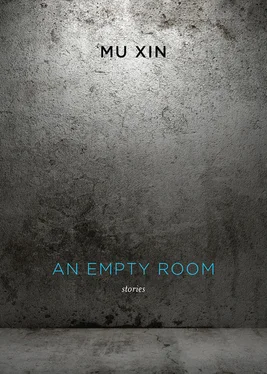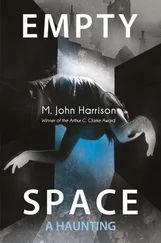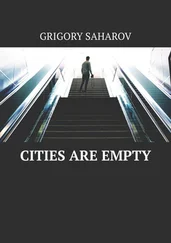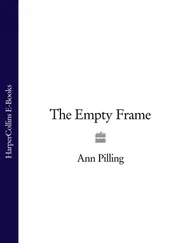Mu Xin - An Empty Room
Здесь есть возможность читать онлайн «Mu Xin - An Empty Room» весь текст электронной книги совершенно бесплатно (целиком полную версию без сокращений). В некоторых случаях можно слушать аудио, скачать через торрент в формате fb2 и присутствует краткое содержание. Год выпуска: 2011, Издательство: New Directions, Жанр: Современная проза, на английском языке. Описание произведения, (предисловие) а так же отзывы посетителей доступны на портале библиотеки ЛибКат.
- Название:An Empty Room
- Автор:
- Издательство:New Directions
- Жанр:
- Год:2011
- ISBN:нет данных
- Рейтинг книги:3 / 5. Голосов: 1
-
Избранное:Добавить в избранное
- Отзывы:
-
Ваша оценка:
- 60
- 1
- 2
- 3
- 4
- 5
An Empty Room: краткое содержание, описание и аннотация
Предлагаем к чтению аннотацию, описание, краткое содержание или предисловие (зависит от того, что написал сам автор книги «An Empty Room»). Если вы не нашли необходимую информацию о книге — напишите в комментариях, мы постараемся отыскать её.
In Our Time
An Empty Room
An Empty Room — читать онлайн бесплатно полную книгу (весь текст) целиком
Ниже представлен текст книги, разбитый по страницам. Система сохранения места последней прочитанной страницы, позволяет с удобством читать онлайн бесплатно книгу «An Empty Room», без необходимости каждый раз заново искать на чём Вы остановились. Поставьте закладку, и сможете в любой момент перейти на страницу, на которой закончили чтение.
Интервал:
Закладка:
The Windsor Cemetery Diary
At first the cemetery was foreign and nameless, but I’ve been taking leisurely walks through it once or twice a week for several years and its seasonal changes no longer astonish me. It didn’t take me long to realize that this is a deserted place, a solitary enclave, as I never encountered anyone. As I stroll along the circular dirt footpath, I pass dark green trees and more dark green trees. Around the outer edge of the path are fourteen tombstones, and inside the circle is a large lawn of fine grass where two species of towering trees make a shady, quiet wood. At the center of this enclosure there is a large, dark rock that leans toward the west, its elephantine back curving above the tall grass. It’s so tempting to rest upon it, not because I’m fatigued but because it’s the perfect spot to watch the intertwined branches above, a sky full of bright green leaves, quivering and rustling.
The previous summer was marked by strong winds and unusually severe rainstorms. Some trees in the cemetery cracked — one that fell in the northwest corner was later sawn into segments and left exposed; in the sunlight I could see the faint yellowish flesh of the tree’s stump and could count a hundred of its rings; a hollowed section was filled with insects, and it seemed the tree hadn’t injured any of the surrounding trees when it fell. In the summer the northwest corner is unusually bright in contrast to the deep shade that covers the rest of the cemetery; I imagined the fallen tree once thick with leaves, and it wasn’t until autumn, late autumn, that my sense of loss became less pronounced when all the logs of the tree had been removed, and by next summer one could not even tell that there had been any loss in the cemetery unless one remembered the fallen tree.
(I should include these thoughts in my letter to Sandra.)
The dark rock, enormous in girth, occupies a spot from which an orchestral conductor might stand, though this particular conductor idly sits there smoking, listening to the counterpoint of leaves in the cemetery, immersing himself in the joys and the glories of the music that pay homage to him while he imagines his own body is a thin paper boat and the sounds of the leaves rippling water on which the boat freely floats. .
Those myriad sounds tickle the fine hairs in the ears, and the breeze feels cool and moist on the hair and skin, but this is not all the idle body feels, for it refuses to be ignored and abandoned and stretches because a healthy body stiffens if it remains on that dark rock too long, it stretches because a body requires stretching and adjusting before it can slowly restore itself.
The body wants to leave the dark rock but doesn’t know where to go — it only knows that it cannot remain in the same position too long, and in fact the body is sensitive to the slightest hint of death and remaining too long in the same position means bordering on death, which is why the adjustment of limbs proves to the body its existence, renews its suspicion of death-like conditions. Only illness or sleep returns some quiet to the body as the body then knows it cannot continue to exist unless illness is cured and sleep satisfied; yet the body cannot remain still after it has recovered or awakened, for whenever there is a long period of stillness, the body receives warning signals from sore bones or itchy skin, and if such signals are ignored more deceptive tricks follow: the body feigns obedience and calmness, discontent rises from within, senses numb and the myriad sounds no longer evoke joy and splendor, and then what use is it to remain on the dark rock?
Why is taking a stroll so suitable for meditation? As the body follows the course of the body and the soul follows the course of the soul, the soul can assign a task to the body, leaving the body no extra energy to meddle with the soul, and the body also becomes content, aimless and wandering, not feeling its labors, cheerfully carrying the soul while moving of its own accord. Indeed, most types of meditation are conspiracies devised to subdue the body, or cause its illusory elimination.
(The above should be sent to Sandra. No, I don’t think she’d complain that I’m making my letter longer than usual.)
This is not a public burial ground for everyone — it is a portion of the Church’s property. All the deceased are Christians who were once ministers. Beyond the trees is the cement plaza that is filled with parked vehicles on Sunday mornings. These buildings, rough stone façades of yellowish gray, make up a monastery built in a simple yet grand style rare even in North America. The empty plaza is like an expanse of water. Occasionally I can glimpse a couple of human figures who appear to be neither monachus nor nonna . If they are not clergymen living in this monastery, they must belong to another order. There are those who have chosen to abandon worldly affairs and live a disciplined religious life, and others who share the same tenets and become members of the same parish, dedicating their lives to the sharing of the gospel, to building and running schools, to offering blessings. It is historically inaccurate to say that such ways of life have nearly died out after four hundred years. Monastic orders originated in the fifth and sixth centuries. When the Crusaders reeled back for the seventh time, it was those in black robes who nursed European culture to keep it from dying at a desolate station on the pilgrimage to Heaven.
I’m certainly interested in finding out if the cemetery has a specific name, but I also wonder if my long familiarity with it allows me to name it myself, as it isn’t uncommon for us to call out to strangers in the darkness, either in intimate tones or through grinding teeth, which is to say, we give them names when the ordinary becomes extraordinary.
The designs of the tombs vary. Buried underneath could be ashes, not bodies. On top of the soil that covers the ashes is a platform more than a meter high built of rows of rectangular coal-black stones. The headstone sits on the platform. In the lower right hand corner of the headstone is a small, rectangular bronze plate bearing the name of the deceased, the date of birth, and the date of death; in the center is a porcelain square with the image of a human body in relief. Although the arbors of summer green initially led me to this cemetery, what brings me back for frequent visits are fourteen different porcelain reliefs. Christ is embodied in these different selves so that his repetitions are never tiring to the eye. On a blank background, these porcelain squares depict his figure on the cross: his emaciated, tall, ascetic body; his robe with folds, glazed in light shades of turquoise and crimson — these details conveying the spiritual. The clay is rough and grainy, and of similar transparency to the sad and morbid yellow in the porcelain square. There is a sense of remote time and space, the portrayal of the human figure in a Byzantine style that invites a prolonged gaze. By the time of the Byzantines, great artists seemed to have gone to sleep, leaving all the work to craftsmen. Art became both mellow and crude. If the craftsmen were not sincere, the style would not have been so crude, though as it is crude, what affects us the most is its sincerity.
(Sandra likes my wordiness. I might as well send her these words. She believes her loneliness in Geneva is real, implying that my loneliness here is false. I once told her that if she could distinguish real loneliness from false loneliness, maybe she really wasn’t lonely.)
The plate on the fifth tombstone is missing, revealing a dark hazel spot in the lower right-hand corner.
The other thirteen tombstones remain intact. But one of them bears no name of the deceased, making one wonder who might be buried underneath.
Читать дальшеИнтервал:
Закладка:
Похожие книги на «An Empty Room»
Представляем Вашему вниманию похожие книги на «An Empty Room» списком для выбора. Мы отобрали схожую по названию и смыслу литературу в надежде предоставить читателям больше вариантов отыскать новые, интересные, ещё непрочитанные произведения.
Обсуждение, отзывы о книге «An Empty Room» и просто собственные мнения читателей. Оставьте ваши комментарии, напишите, что Вы думаете о произведении, его смысле или главных героях. Укажите что конкретно понравилось, а что нет, и почему Вы так считаете.












